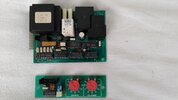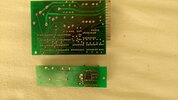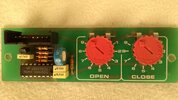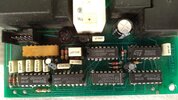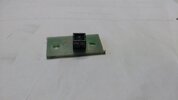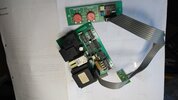I have vintage Slavedor garage door opener that has stopped closing the door. If I disable the up/down current control to the motor it works fine. I attached the larger control board which is for everything and the smaller current control board.
Normally the current control is set slightly above the maximum current normally used. If the door exceeds this it should stop and reverse when closing or just stop when opening. Can someone please explain how the current control board works so that I can try and repair or replace the defective parts.
I see my self as an interested novice willing to learn.
Normally the current control is set slightly above the maximum current normally used. If the door exceeds this it should stop and reverse when closing or just stop when opening. Can someone please explain how the current control board works so that I can try and repair or replace the defective parts.
I see my self as an interested novice willing to learn.

